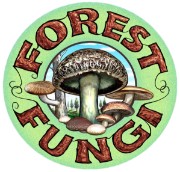Use Forest Fungi Grain Spawn
How to Use Forest Fungi Grain Spawn - with it you are one step away from growing your own delicious mushrooms!
STEP 1: CHOOSING YOUR SUBSTRATE MEDIUM
Popular choices for fruiting substrates include sugarcane mulch, hardwood sawdust, wheat straw, other cereal grain straws and even coffee grounds. I like a combination of sawdust and oaten chaff. Forest Fungi has a recipe and technique for preparing a supplemented sawdust substrate for your ease.
STEP 2: PASTEURISE, STERILISE OR LIME TREAT YOUR SUBSTRATE
Your substrate needs to be free from continents prior to mixing with your grain spawn. This will increase your chances of fruiting a high yield of mushrooms and reduce contamination. You can select which technique suits you best. There are benefits and drawbacks from all methods, but each should provide you with delicious mushrooms on your plate!
OPTION: PASTEURISING YOUR SUBSTRATE
Equipment required
- Substrate medium
- Bucket or esky big enough to hold substrate
- Large pot to heat water to 80 degrees Celsius
- Your chosen fruiting vessel (e.g. bucket with holes, plastic bag or cardboard box)
Time required: 1 – 2 hours
Technique
Pasteurising your substrate involves heating your substrate to between 60 – 80 degrees Celsius for 1 – 2 hours. An easy way to achieve this is to load your substrate into a bucket or esky and cover with hot water 80 degrees Celsius and leave for 1 – 2 hours. Drain off excess moisture and when cool enough to handle mix grain spawn throughout at a ratio of 1:5 up to 1:10 and load into your chosen fruiting vessel (e.g a bucket with holes, mycobag or plastic bag).
OPTION: STERILISING YOUR SUBSTRATE
Equipment required
- A Pressure Cooker (we recommend the All American 921), or large vessel to steam the bags in, such as 200L drum.
- Filter patch bags
Technique
STERILISATION TECHNIQUE:
If you choose to sterilise your substrate, you need to heat your substrate to 121 degrees Celsius for 1 – 2 hours. To achieve this, you need to use a pressure cooker that reaches 15psi.

PASTURISATION TECHNIQUE:
An alternative method involves steaming for up to 12 hours, which although technically is not sterilising for our purposes it is sufficient. A common method is to use a 200 litre drum with a fire/gas stove underneath and 10 – 20 litres of water inside the drum, with the substrate packed in bags raised above the water line. A lid is loosely placed on top but not secured. A hole is drilled in the lid, to allow pressure to escape, and to allow a thermometer to be inserted into the drum When substrate is cooled mix grain spawn at a ratio of 1:5 up to 1:10
OPTION: LIME OR WOOD ASH TREATMENT
Equipment required
Time required: 4-24 hours
- Wood ash or Hydrated lime with low magnesium content (<10%)
- Bucket to mix lime with water
- Another vessel or bucket to soak substrate in lime water mix
- Your chosen fruiting vessel (e.g. bucket with holes, plastic bag or cardboard box)
Technique
Your fruiting substrate can also be treated by drastically altering the ph. To achieve this, you can use wood ash from your fire place or hydrated lime. Make sure you use a hydrated lime with low magnesium content (<10%). This is my preferred method for growing oyster mushrooms because it is quick, cheap and easy. I like to dissolve 4 cups of wood ash (or 1/2 a cup of hydrated lime ) in 20 litres of water (be careful when handling hydrated lime as it is very caustic and can cause burns). Then I place my substrate in a large bin and completely cover with the lime water. Leave for between 1-24 hours then drain off excess fluid. You can reuse this fluid a few times, but the pH will drop, so add more ash/lime.
Benefits of lime and/or wood ash treatment:·
- Cheap and easy·
- No special equipment required
- Adds calcium to the substrate
Drawbacks of lime and/or wood ash treatment:
- Care needed when using as hydrated lime is highly caustic
ADD YOUR GRAIN SPAWN TO YOUR SUBSTRATE BAG This is the really exciting bit, adding your Forest Fungi Grain Spawn to your fruiting substrate bag to grow your own delicious mushrooms! When cool, add 1 cup of spawn per supplemented sawdust bag, then close the bag using an impulse heat sealer, or tape or twist ties. Keep your bag somewhere out of direct sunlight until you start to see little mushrooms forming. A bit of sunlight when they start forming is good. I have shelves on wheels, which I move under cover or put shade cloth on the top if it is too hot. This allows me to use rain and wind and sun to minimize costs and pests:
I cut the top off the bags and allow mushrooms to form from the top.If I see clusters forming on the sides, I cut a hole for them to grow out of as outlined below:
Check out the latest Forest Fungi offers of Grain Spawn to try growing your own!



